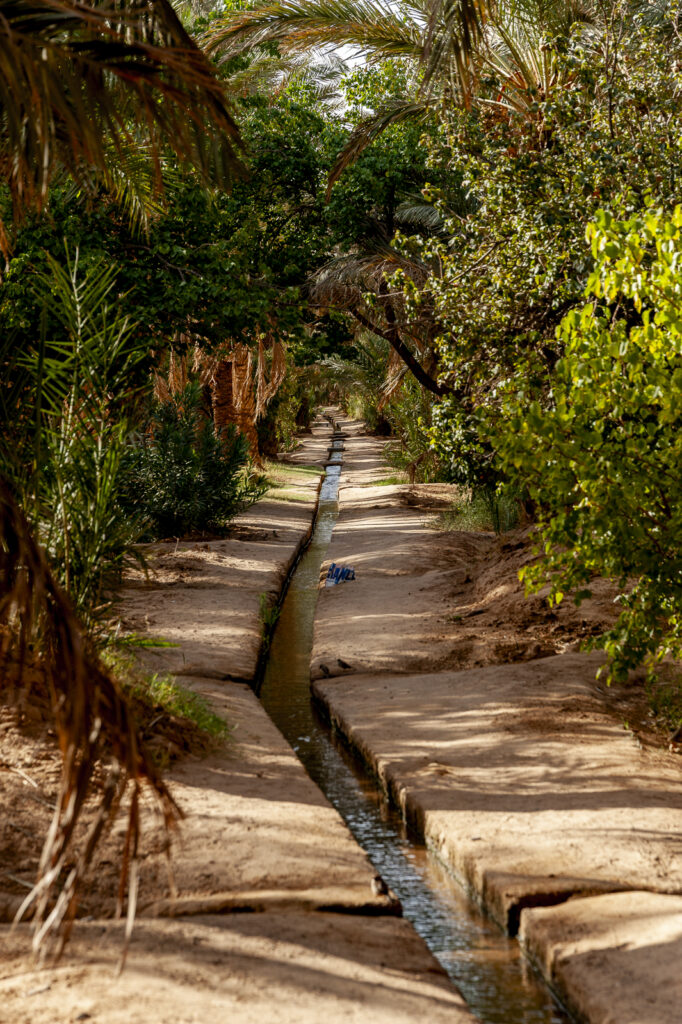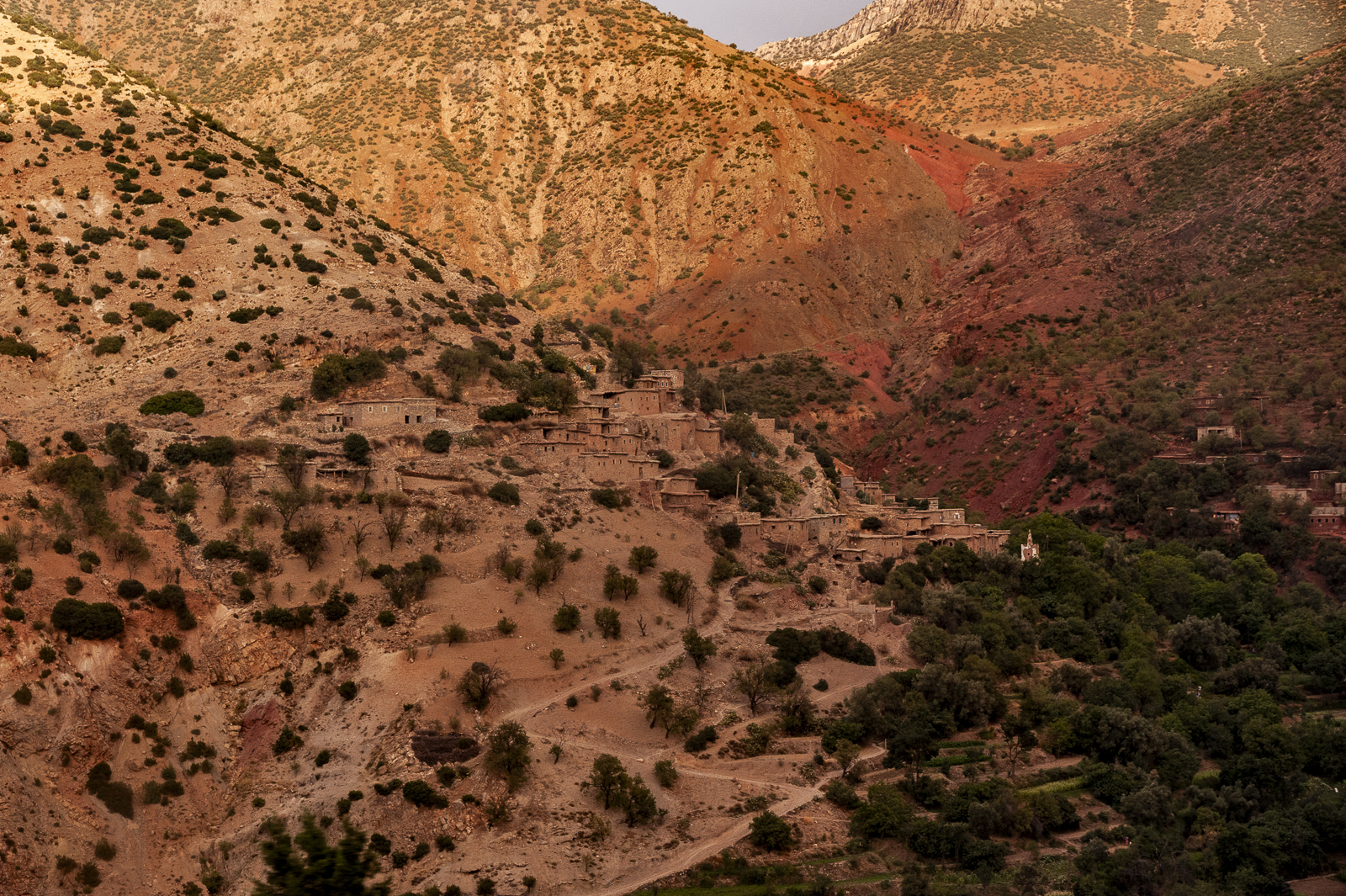
Over the centuries, Amazigh communities in North Africa have developed different systems to efficiently capture and distribute water, allowing the development of stable settlements and irrigated agriculture even in arid and semi-arid regions, thereby favouring the formation of oases.
One of the most widespread water management techniques is the saqiya (Arabic) or targha (Amazigh), an irrigation channel that transports water from springs or wadis (seasonal rivers) to agricultural plots. Its use is regulated by customary rules that organise irrigation shifts on an equitable basis.
Another important system is that of underground drainage galleries, called khettaras in Morocco, foggaras in Algeria, and qanats in the East, where this technique originated. These structures, which function similarly to an inverted aqueduct, allow water to be taken from distant aquifers to the surface, from where it is distributed via saqiyas to cultivate lands and supply villages. It is a particularly useful method in arid regions, allowing water to be transported several kilometres and minimising evaporation losses as it is an underground pipeline. However, its construction and maintenance require specialised technical expertise and a high degree of community collaboration.
These traditional forms of water management are still in use today, highlighting the value of knowledge passed down through generations, and the deep bond that Amazigh communities maintain with the water resources available to them.
Alba San Juan Pérez
IEMYRhd – University of Salamanca
















